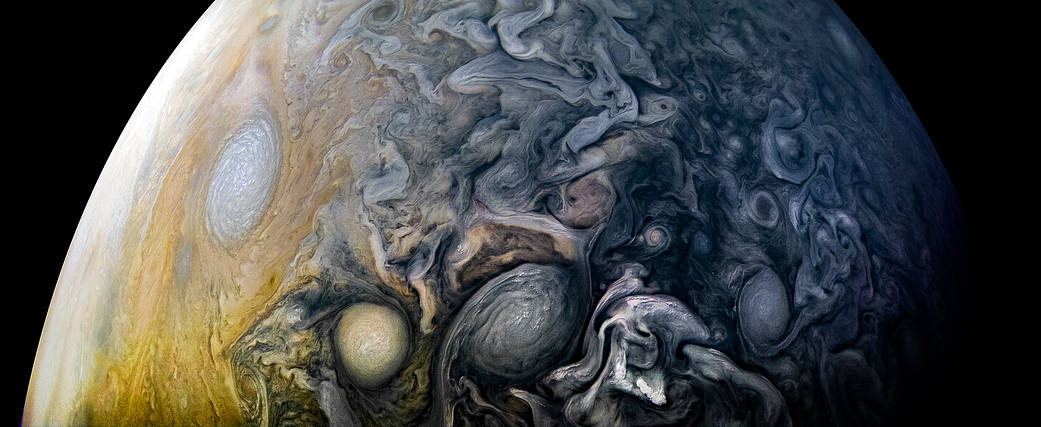Jupiter is the largest planet in our solar system, and also believed to be the most dominant. Jupiter is a huge gas giant, which makes it considered to be a cornerstore of planet formations. Jupiter is also a very influential planet and is capable of affecting how the formation and evolution of other planets in the solar system is performed. That’s why Juno’s mission is of great importance. NASA can learn more about the origin of the solar system and how it formed, and also understand more about other celestial bodies in it, such as asteroids and comets. New Juno photos shed light on the northern hemisphere of the gas giant and feature a look at how the clouds shift through its atmosphere.
Juno’s mission was originally created, and then launched by NASA on August 5, 2011. It was launched into space using one of the most powerful rockets in the world, the Atlas V 551. During 2013, the spacecraft pushed on towards Jupiter using Earth’s gravitational pull, to arrive at Jupiter in 2016 and after dangerous maneuvering of the spacecraft, it was placed in a special orbit, known as a polar orbit to start its mission and send information about the planet back to NASA.
Four days ago, NASA published new Juno photos as the spacecraft is reaching its 12th flyby of Jupiter’s northern hemisphere. The new Juno photos look amazing and show a lot of details of the planet’s northern hemisphere and different, unique cloud patterns. NASA made the photos available publicly so that photography artists, whether they are novices or professionals, feel encouraged to download and edit them in order to make them even better. The photos can be accessed here.
During these flybys by Juno, it focuses on data regarding the origin of the planet, its different weather layers, giant storms, and other data sent back to Earth, available in NASA’s information video. The spacecraft also observes the gravitational and magnetic field of the planet. Given that the spacecraft interacts closely with the gas giant every 54 days, more new photos will be published again on May 24.
According to NASA, Jupiter gets a quarter less of sunlight from the sun and is located five times further away compared to Earth. Also, Juno is the first spacecraft that is solar-powered and managed to get so far from the sun and still function properly. NASA designed Juno to be in this special orbit and orientation, and also made it large, at 66 feet in diameter and 15 feet in height, so that the sunlight could reach the spacecraft even when it’s so far away.
Nevertheless, this mission is scheduled to meet its end in July. The spacecraft will end up similarly like the Cassini spacecraft that orbited Saturn for so many years and plunged into its atmosphere in September of last year. The Juno spacecraft has helped make some wonderful discoveries regarding Jupiter. The spacecraft is programmed that once the mission ends, it immerses into the planet’s atmosphere and burns up soon after.





